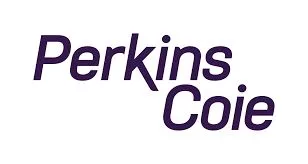- within Food, Drugs, Healthcare and Life Sciences topic(s)
- in United States
- within Family and Matrimonial, Transport and Real Estate and Construction topic(s)
On June 3, 2025, lawmakers introduced the Supporting Accessible, Flexible, and Effective (SAFE) Sunscreen Standards Act in the U.S. House of Representatives, aiming to bring U.S. sunscreen regulations in line with scientific advancements and current global standards.
The bipartisan legislation seeks to address a regulatory bottleneck that has left American consumers with fewer sunscreen options than those available internationally.
Why Is This Legislation Needed?
Proponents of the bill argue that this legislation is motivated by a pressing public health challenge: skin cancer is the most common cancer in the United States, with over five million cases diagnosed annually. Modernizing sunscreen standards is viewed as a step in skin cancer prevention.
The bill's advocates contend that despite advances in sunscreen science, no new active ingredients have been approved by the Food and Drug Administration (FDA) since 1999. Rep. John Joyce (R-Pa.) noted that the bill was intended to ensure that "the FDA quickly approves new sunscreen ingredients, giving the American public access to the best skin protection available."
In 2014, Congress unanimously passed the Sunscreen Innovation Act to create a more efficient process for approving new sunscreen ingredients. However, this framework expired at the end of fiscal year 2022. In 2020, the Coronavirus Aid, Relief, and Economic Security Act took further steps to modernize the system by adding Section 505G to the Federal Food, Drug, and Cosmetic Act, codified at 21 U.S.C. § 355h. This change was intended to update the review process for over-the-counter (OTC) drugs, including sunscreens. Despite these efforts, significant gaps in the approval process remain.
Key Provisions of the SAFE Sunscreen Standards Act
The SAFE Sunscreen Standards Act proposes several key reforms to address these issues. It would modernize the FDA's evaluation process for sunscreen ingredients by allowing the use of real-world evidence, observational studies, and other scientifically valid approaches to complement or supplement traditional clinical testing. The bill also encourages the use of non–animal testing alternatives and requires the FDA to issue guidance on how sponsors can utilize these methods to meet safety and efficacy standards. Additionally, it mandates annual reporting to Congress on the progress of integrating alternatives to animal testing.
Bipartisan Support and Industry Impact
This legislation has bipartisan support. In addition to Rep. John Joyce, sponsors in the House are Dave Joyce (R-Ohio); Debbie Dingell, (D-Mich.); and Deborah Ross, (D-N.C.). Rep. Dingell emphasized the importance of the bill, stating, "We must ensure that Americans have access to the safest and most effective sunscreens, and that means updating our regulatory process to keep pace with innovation." Rep. Dave Joyce added, "This legislation will help ensure that Americans have access to the latest sunscreen products that meet the highest safety standards." A coalition of dermatologists, public health advocates, and industry groups support the legislation, arguing that modernizing sunscreen standards is essential for both consumer safety and continued innovation.
Next Steps
The SAFE Sunscreen Standards Act has been referred to the House Committee on Energy and Commerce. The full text of the bill is available here.
Summer Associate Lauren Chivers contributed to this article.
The content of this article is intended to provide a general guide to the subject matter. Specialist advice should be sought about your specific circumstances.




